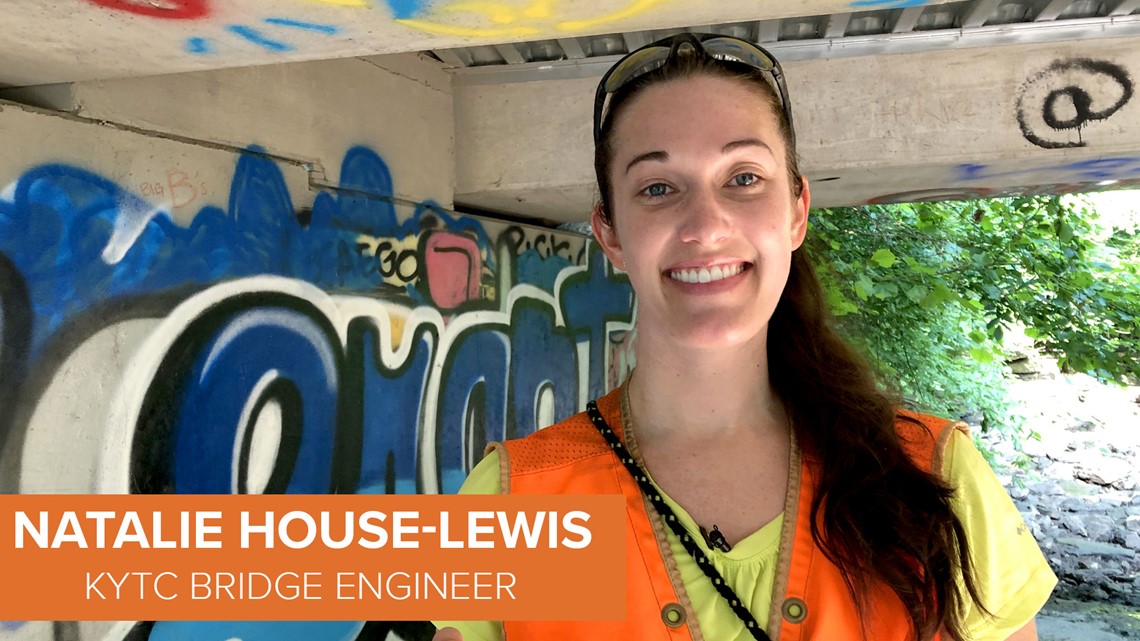LOUISVILLE, Ky. — Let’s say you drive over bridges on your way to work. Maybe, oh, I don’t know, the Sherman Minton. And you’re greeted with the sight of a lot of rust, and a lot of cracking. And you ask: “Just how much rust and cracking can a bridge take before it’s no longer safe to drive over?”
(I admit it. This WHAS Up question comes from me. But, I have a feeling some of you out there have wondered it, too.)


It’s a natural question to ask; but, as I learned, it may also be the wrong question to ask. I was able to shadow Natalie House-Lewis on the job. She’s a bridge engineer with the Kentucky Transportation Cabinet, and one of her main duties is to travel throughout our area and keep an eye on our bridges to make sure they’re safe and holding up well.


“That’s the whole point of why we’re out here,” she told me. “The idea is we want to keep these pretty, and strong, and in service just as much as everybody else. Because we live here, too.”
House-Lewis and her team have a full-time job on their hands. In District 5 (which includes Jefferson County, and several surrounding counties), there are around 1,400 bridges, tunnels, and structures that they have to keep tabs on. Across the entire state of Kentucky, there around 14,000.
In the video above, I compiled a quick montage to show just some of the things that Natalie looks at when she judges the safety and quality of a bridge. Like us layfolk, she does take note of rust, and cracking; but, it’s important to understand that those are just a tiny piece of the overall puzzle she’s solving. And, furthermore, when she sees rust and cracking, she doesn’t necessarily see a problem.
The gist is, she says we should be trusting engineer eyes over our own eyes.
“Concrete is going to crack, and steel is going to rust,” she explained. “And, believe it or not, there is specific type of steel—it’s called ‘weathering steel’—where the rust is a protective layer. So, it’s designed to do that.”
That’s not to say that there isn’t work to do. According to their team’s findings, 15% of the structures in our district are in “good condition,” 76% are in “fair condition,” and 9% are in “poor condition,” and need repairs. KYTC said that its “Bridging Kentucky” program is working to repair or replace more than 1,000 structures over the next six years that are in poor condition or have restricted weight limits.
It also told us that a poor condition rating does not necessarily mean a bridge is unsafe. When a bridge has been deemed unsafe by bridge inspectors, it is closed to traffic until it is fixed or replaced. KYTC told us more than 70 bridges have been closed.
But, for you and me, and our daily commutes, we can at least now know to not judge a book by its cover (or, a bridge by its rust).
All data collected by bridge inspectors is public. You can see how your daily commute rates by checking out the KYTC website.
---
Want to know "WHAS up" with something? Rob Harris is your guy. He's talking to some of the smartest people in our community to find out more about science, history, urban legends, local quirks, and more.
Have a question or topic you want him to check out? Send him a tweet or a Facebook post.

